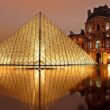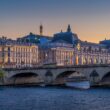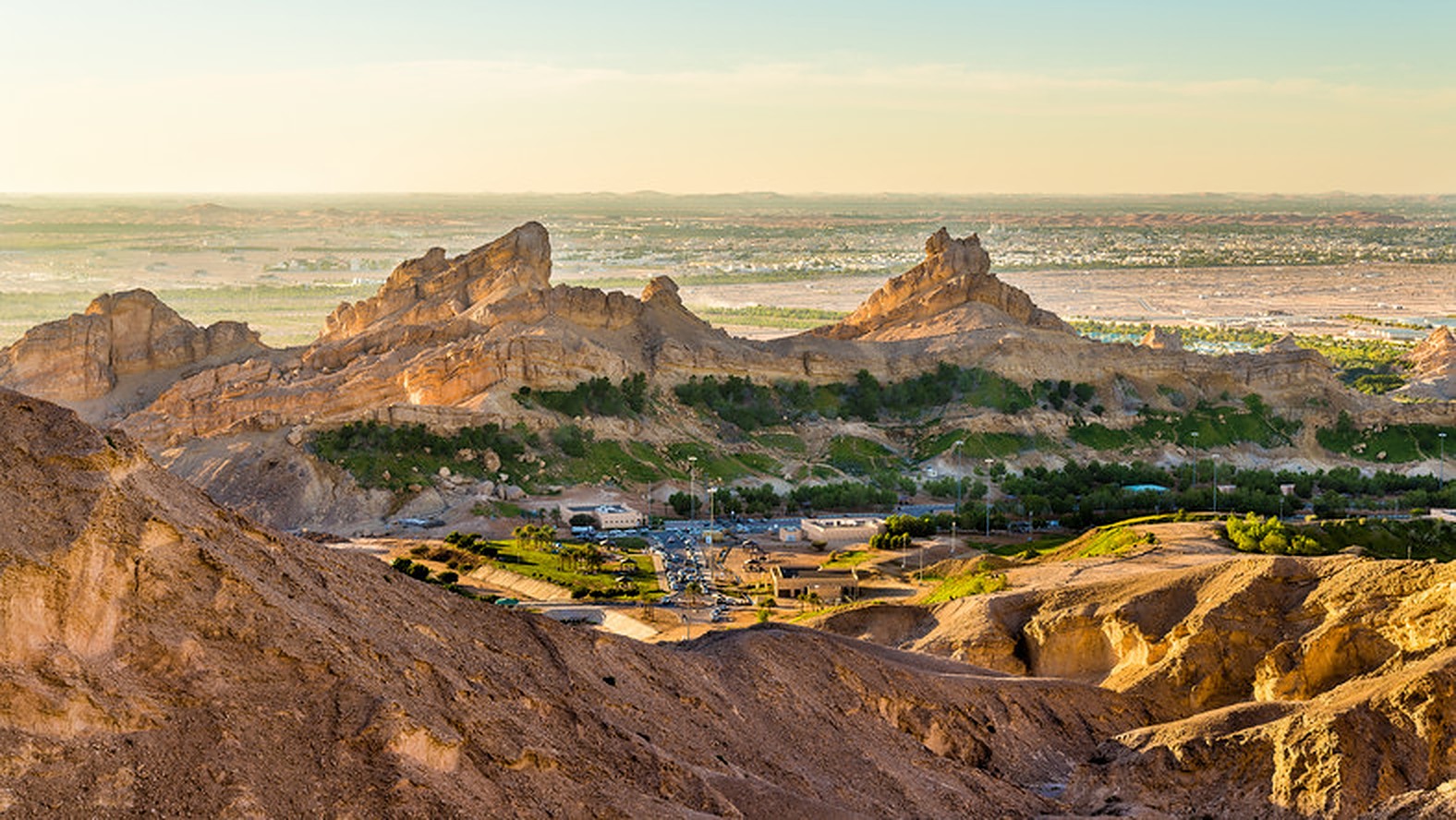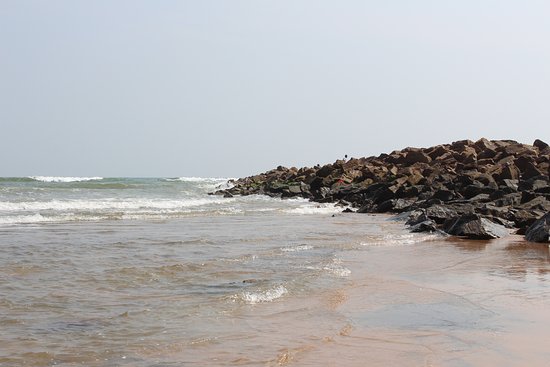Vatican City : This is a state within a state, the smallest in the world, with its own army, railway, mint, post office and the head of Catholicism – the Pope. Only the Castel Sant’Angelo, the Vatican Museums, Piazza San Pietro and the cathedral of the same name are open to tourists. The entrance to the rest of the dwarf country is guarded by vigilant papal gendarmes, who, because of their ridiculous costumes, look like fabulous pages.
Piazza San Pietro is visited daily by thousands of tourists and pilgrims from all over the world. They drink “holy water” from fountains, admire the columns and statues, stand in a long queue under the scorching sun and rain to get to the Cathedral, or come to Sunday morning sermons to see the Pope. The tiny figure of the Pope on the balcony or staircase is barely visible to those praying, and therefore huge screens are installed throughout the square, broadcasting the ceremony and showing His Holiness in close-up.
You can also send home a postcard stamped by the Vatican State – for this you need to buy a Vatican postage stamp and drop the message into a yellow mailbox.
Places to Visit | Vatican City
Church dedicated to Saint Thomas Villanova

Vatican City
Saint Thomas Villanova is a famous preacher and ascetic who lived in the 15th-14th centuries. The Church of St. Thomas Villanov was designed by Lorenzo Bernini (1658-1661) by order of Pope Alexander VII. During the three years mentioned, the genius Bernini built three churches, each of which was different: S. Maria dell’Assunzione in Ariccia had a circle at the base, Roman S. Andrea al Quirinale had an ellipse, and the local church has a Greek cross at the base. The decoration of the church was entrusted to the best craftsmen headed by Antonio Raggi.
Castel Sant’Angelo

Vatican City
The Castel Sant’Angelo has a long history: the Roman Emperor Hadrian decided to build a mausoleum on this site for his own future repose. And for the first few centuries, the Castel Sant’Angelo was just a tomb. The huge tomb was then supposed to become the largest and most beautiful building in the ancient world. And so it happened: 4 years later, on the banks of the Tiber, a gigantic pedestal, as tall as a three-storey house, grew, and on it was a cylindrical room 64 m in diameter and 20 m high; crowned all this with a dome-cone, covered with earth and turned into a hill. A cypress garden was laid out on the hill and decorated with a marble sculptural composition in the form of four horses and a chariot with Adrian. And a wide stone bridge was thrown across the Tiber, which led directly to the mausoleum. True, the ruler himself did not see all this beauty: he died. In general, that’s why I built it.
But the late Adrian did not enjoy the sole possession of the tomb for long: after years, other emperors of Rome began to be buried here, and ultimately the Hadrian’s mausoleum became, in fact, the cemetery of monarchs – until 211 AD, when an urn with the ashes of the last emperor, Septimius Severus, was brought here. Then for some time (about two centuries) the building was not used and was almost forgotten, until in the year 400 attempts to capture Rome by various enemy nations began, and the mausoleum was hastily converted into a military fortress.
In the VI century, the plague came to Rome, the epidemic was terrible, and Pope Gregory I led a procession through the city, praying for the salvation of the people. Surprisingly, it was at the former Hadrian’s mausoleum, the Castel Sant’Angelo, that the Pope had a vision: Archangel Michael hovered over the fortress and sheathed his sword. It was a sign that the Lord had heard the prayers of the Romans and would have mercy on the city. Indeed, the terrible disease ended, and the tomb-fortress acquired a sacred status among Christians, its current name – the Castle of the Holy Angel – and a huge marble statue of an angel on the top. However, all this sacredness did not prevent the rulers of Rome later from setting up a prison and torture room in the castle, especially famous for its bloodthirstiness during the Inquisition: it was here that the stubborn astronomer Giordano Bruno, accused of heresy, awaited his fate, and it was from here that he was led to the fire.
Over the past centuries, the Castel Sant’Angelo has lost a lot of its beauty – this is very noticeable when you compare current photographs with old images. Despite its enormous size, the fortress looks gloomy and inconspicuous. There is no trace of a cypress garden. Even the marble angel now looks at Rome not from the top of the castle, but stands sadly in the Court of Glory, since during a thunderstorm he was badly damaged by a lightning strike.
Now, Inside the castle is the National Museum with the treasures of the Catholic Church, the library, the Armory and the Museum of the Military History of Rome.
St. Peter’s Basilica

Vatican City
The first thing to plan for a visit when going to the Vatican is St. Peter’s Basilica. This is the heart of the Catholic world. It was at this place, according to legend, that the Apostle Peter was killed. Peter’s Cathedral in the Vatican was built for over 120 years, and if you look at it from above, you will see that it is made in the form of a Catholic cross. Its area is 15 thousand square meters, and the capacity is up to 100 thousand people! One who enters the interior of St. Peter’s Basilica immediately feels the breath of eternity: this structure is so grand and beautiful. In the middle is the papal altar, and below it is the tomb of St. Peter. Believers come here hoping to be healed of diseases, to become calmer and happier.
The dome of the Cathedral is slightly smaller than the dome of the Roman Pantheon, but thanks to the height of 133 meters it looks very impressive. It was created by the great Michelangelo, who at the age of 72 began to supervise the construction, saying “I pay tribute to God.”
From the observation deck of the dome of St. Peter in the Vatican, all of Rome is visible at a glance. For 7 euros, an elevator will take you to the roof of the cathedral, and then you will have to pass the test with 320 steps along a labyrinth-like staircase. If you want to save 2 euros or you were taken on a bet, for 5 euros you can cover the entire ascent on foot. In a light-headed state, reaching the panoramic platform, you will understand the full power of the expression “The road to God is hard.”
Vatican Museums

Vatican City
The Vatican Museums are several exhibition halls scattered throughout Rome. But the most important treasury is located directly behind the high wall of this “state within a state”.
The famous Vatican museums are 9 kilometers long! What is not there – huge statues of pharaohs and painted jugs of ancient Etruscans, mysterious mummies and beautiful frescoes by Michelangelo, Raphael’s Chambers and a bust of the Pope with a red nose due to increased friction by tourists.
There are no travel guides or Russian-speaking guides in the Vatican museums, so the main rule is the same as in our folk tales: if you go to the right, you will lose time, if you go to the left, you will find wealth. The fact is that to the right is the entrance to the Pinakothek – an art gallery, from which you can refuse without any remorse. But to the left is a special world, symbolic and ominous, such as the Hall of beasts tearing and devouring each other (bronze guts and blood look very naturalistic), or calm and sublime, like the Hall of the Muses – patrons of different types of arts.
In the Round Hall (Rotonda) there is a dome, like in the Pantheon, and in the Gallery of Maps, there is a splendid ceiling in the form of many paintings in gold frames and, of course, ancient maps. It is curious how the ancient cartographers painted the world: all the mountains and forests seem to be convex, and the seas are so blue that they seem infinitely deep.
In the famous Stanzas of Raphael, in the very first room, be sure to raise your head and look at the ceiling – real 3D: halls and corridors are depicted on a completely flat surface as if instead of a ceiling there was really a huge space!
In no case waste your energy on pictures that are pseudo-genius to the point of meaninglessness in the Hall of Contemporary Art: in front is the Sistine Chapel, a room painted by Michelangelo and Botticelli! In order to preserve the quality of the frescoes in the Capella, photographs and videos cannot be filmed, and one can only talk in a reverent whisper.
Once outside into the courtyard, look into the underground Chariot Hall: there you will see old carriages and modern Mercedes popes.
Advice, To avoid the long line at the Vatican Museums, you can book your ticket on the Vatican website and print your confirmation email. For the reservation you will have to pay 4 euros on top.
Papal palace
The Papal Palace has other names: Apostolic Palace, Vatican Palace, and the official (but rarely used) Palace of Pope Sixtus V.

Vatican City













